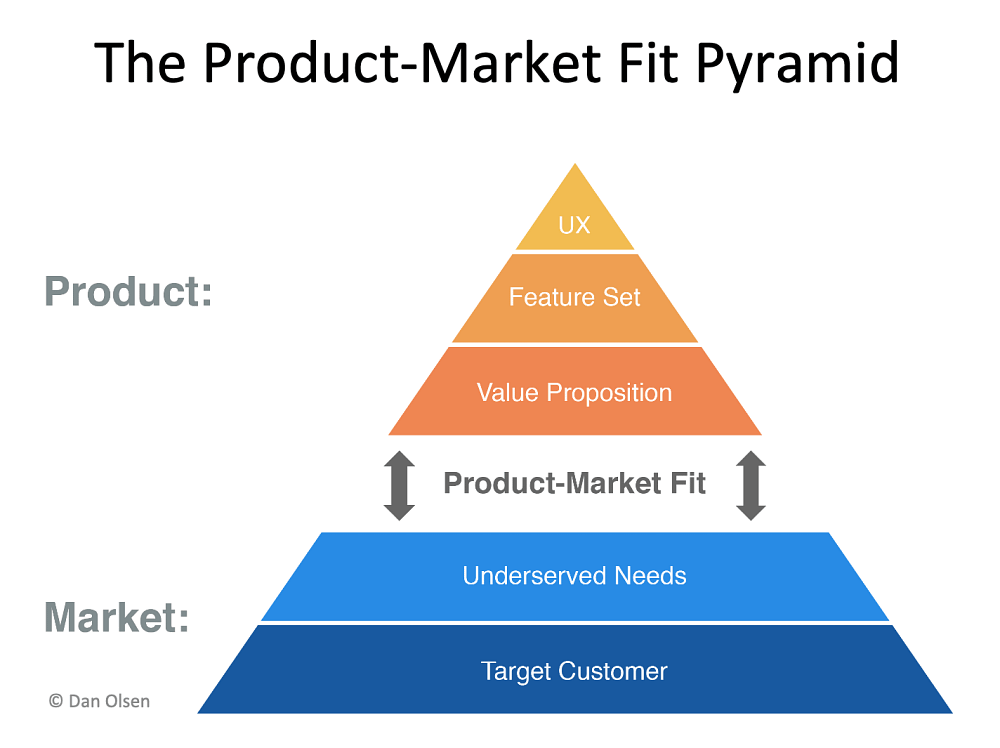In the dynamic landscape of startups, few concepts hold as much weight and significance as finding product-market fit. It’s the pivotal moment when a startup’s offering resonates with its target audience to a degree where success becomes inevitable. However, achieving this elusive state is often challenging and requires a deep understanding of the market, constant iteration, and careful tracking of key metrics. In this guide, we’ll delve into the intricacies of finding product-market fit, including essential metrics, indicators, and what comes next once this milestone is reached.
Understanding Product-Market Fit
Product-market fit, in essence, signifies the alignment between what a startup offers and what the market demands. It’s when a product fulfills a genuine need or solves a pressing problem for a specific group of users, leading to significant adoption and satisfaction. Marc Andreessen, a prominent venture capitalist, famously described it as “being in a good market with a product that can satisfy that market.”
Key Indicators of Product-Market Fit
Identifying whether your startup has achieved product-market fit involves analyzing various qualitative and quantitative indicators:
1. Customer Satisfaction and Engagement:
- High levels of customer satisfaction and engagement indicate that your product resonates with its users. Analyze metrics such as Net Promoter Score (NPS), customer feedback, and usage patterns to gauge satisfaction and retention.
2. Retention Rates:
- Retention metrics reveal whether users find enough value in your product to continue using it over time. Monitor metrics like monthly active users (MAU), churn rates, and cohort analysis to track user retention and identify trends.
3. Market Demand and Growth:
- Assess market demand and growth potential through indicators such as user acquisition rates, organic growth, and expansion into new customer segments or geographic markets.
4. Referral and Virality:
- The willingness of existing users to refer your product to others signifies its utility and value proposition. Measure referral rates, viral coefficient, and social sharing to gauge the organic growth driven by user advocacy.
5. Revenue and Monetization:
- Sustainable revenue streams validate the viability and scalability of your business model. Analyze metrics like average revenue per user (ARPU), customer lifetime value (CLV), and conversion rates to assess monetization strategies and growth potential.
Metrics to Track
To track progress toward product-market fit, startups should focus on a set of key metrics tailored to their specific industry, target audience, and growth stage:
1. Customer Acquisition Cost (CAC):
- CAC measures the cost of acquiring each new customer and helps assess the efficiency of marketing and sales efforts relative to revenue generation.
2. Lifetime Value (LTV):
- LTV estimates the total revenue a customer is expected to generate over their entire relationship with the company. A high LTV:CAC ratio indicates healthy unit economics and sustainable growth.
3. Activation Rate:
- Activation rate measures the percentage of new users who experience the core value proposition of your product. Improving activation rates can lead to higher retention and engagement levels.
4. Time to Value:
- Time to value quantifies the amount of time it takes for users to derive meaningful benefits from your product. Shortening this period enhances user satisfaction and reduces churn.
5. Customer Feedback and Net Promoter Score (NPS):
- Regularly soliciting customer feedback and measuring NPS helps track overall satisfaction levels and identify areas for product improvement.
Knowing When You’ve Achieved Product-Market Fit
While product-market fit isn’t an exact science, certain signs indicate that your startup has reached this milestone:
- Consistent User Growth: Your user base is expanding organically, driven by positive word-of-mouth and referrals.
- High Retention Rates: Users continue to engage with your product over time, leading to low churn rates and sustained activity.
- Customer Advocacy: Users actively promote your product to others and demonstrate a strong emotional attachment.
- Revenue Growth: Your business generates consistent revenue streams, indicating monetization strategies are effective and scalable.
Achieving product-market fit is a pivotal moment for any startup, but it’s important to recognize that it’s not a one-time achievement. Market dynamics evolve, customer needs shift, and competitors emerge, requiring startups to continuously adapt and innovate to maintain relevance and competitiveness.
Next Steps After Finding Product-Market Fit
Once a startup has achieved product-market fit, the focus shifts to scaling operations, optimizing processes, and capitalizing on growth opportunities. Here are some key next steps:
1. Scale Operations Efficiently:
- Streamline internal processes, expand infrastructure, and invest in technology to support growing user demand and maintain service quality.
2. Expand Market Reach:
- Identify new customer segments, geographic markets, or verticals where your product can address unmet needs or provide additional value.
3. Invest in Customer Success:
- Prioritize customer support, success, and satisfaction to nurture long-term relationships and foster loyalty among existing users.
4. Iterate and Innovate:
- Continuously gather user feedback, monitor market trends, and iterate on product features to stay ahead of competitors and address evolving customer needs.
5. Monitor Key Metrics:
- Maintain a keen focus on key performance indicators (KPIs) to track progress, identify areas for improvement, and make data-driven decisions.
6. Build a Strong Team:
- Assemble a talented and diverse team capable of driving growth, executing strategic initiatives, and navigating challenges along the journey.
In conclusion, finding product-market fit is a critical milestone that sets the stage for sustainable growth and long-term success. By understanding the key indicators, tracking relevant metrics, and continuously evolving to meet customer needs, startups can position themselves for continued innovation, expansion, and market leadership in an ever-changing landscape. As the journey unfolds, embracing agility, resilience, and a customer-centric mindset will be essential ingredients for enduring success in the competitive world of startups.
In the end, it’s not just about finding product-market fit; it’s about continuously redefining it to stay ahead of the curve and create lasting value for users and stakeholders alike.
* AI helped write and generate images for this post
If you enjoyed this post, please share the love and subscribe to the Product Management Mastery newsletter for more content like this.
Let’s Build a Better World.
Whenever you are ready:
Here are a few ways I can help you:
- Generate leads & customers by getting your product or business in front of 1,800+ subscribers of the Product Management Mastery Newsletter here.
- Hire me as your fractional Senior Product Manager / Head Of Product to unlock fresh perspectives on how you can add more value for your customers here.
- Have an idea💡 for a product you want to build? I can help you with product strategy, design, development, & launch. Click here to submit a request for a free consultation.




